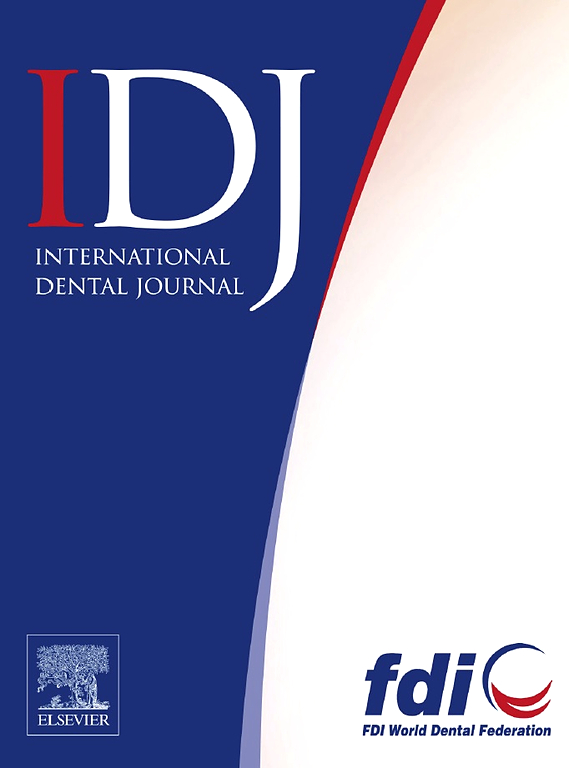Advancements and Trends in Electrochemical Biosensors for Saliva-Based Diagnosis of Oral Diseases: A Bibliometric Analysis (2000–2023)
IF 3.2
3区 医学
Q1 DENTISTRY, ORAL SURGERY & MEDICINE
引用次数: 0
Abstract
Background
Oral diseases, such as dental caries, periodontal diseases, and oral cancers, represent significant global public health challenges. With the COVID-19 pandemic, traditional diagnostic methods have limitations, thus highlighting the need for innovative, early, and non-invasive diagnostic approaches. Analyse and summarise publications globally through a comprehensive bibliometric study to help researchers suggest possible directions for future research.
Objective
The purpose of the study was to evaluate global academic productivity, impact, and collaboration of electrochemical biosensors for oral diseases utilising bibliometrics based on annual number of publications, countries and regions, institution, authors, journals, citations and co-occurrences of author keywords over the last 20 years.
Methods
This study employs bibliometric analysis to assess the research of electrochemical biosensors for oral diseases in the Web of Science from 2000 to 2023. Utilising VOSviewer, CiteSpace software, and Microsoft Excel, we conducted a bibliometric and visualised analysis of electrochemical biosensors for oral diseases.
Results
The quantity of pertinent publications in this research domain displays a fluctuating but overall upward trend. In aggregate, there are 341 articles and 82 reviews, encompassing research contributions from 55 countries, 649 institutions, and involving 2068 authors. Among these publications, China, the USA, and India emerged as the predominant contributing nations. Predominantly, articles found their publication venue in “Biosensors & Bioelectronics.” Notably, the author with the highest number of publications and most influence is Wang, Joseph S. The top 3 keywords include “biosensor,”“sensor,”“saliva.”
Conclusion
In this investigation, statistical analysis and network visualisation were conducted to reveal the research progress, trends, and trending topics on electrochemical biosensors for oral diseases via a thorough bibliometric analysis. We found that Despite these challenges, electrochemical biosensors hold significant promise for transforming oral disease diagnostics. Overcoming current technical barriers will improve both oral and systemic health outcomes.
基于唾液的口腔疾病诊断电化学生物传感器的进展与趋势:文献计量学分析(2000-2023)
口腔疾病,如龋齿、牙周病和口腔癌,是重大的全球公共卫生挑战。随着COVID-19大流行,传统诊断方法存在局限性,因此需要创新、早期和非侵入性的诊断方法。通过全面的文献计量学研究分析和总结全球出版物,以帮助研究人员提出未来研究的可能方向。目的利用文献计量学的方法,对近20年来口腔疾病电化学生物传感器的年出版物数量、国家和地区、机构、作者、期刊、被引频次和作者关键词共现率进行评价,评价电化学生物传感器的全球学术生产力、影响力和合作情况。方法采用文献计量学分析方法,对2000 ~ 2023年Web of Science期刊中有关口腔疾病电化学生物传感器的研究进行评估。利用VOSviewer、CiteSpace软件和Microsoft Excel对口腔疾病电化学生物传感器进行文献计量和可视化分析。结果该研究领域的相关论文数量呈波动趋势,但总体呈上升趋势。总共有341篇文章和82篇综述,涵盖了来自55个国家、649个机构的研究贡献,涉及2068位作者。在这些出版物中,中国、美国和印度成为主要贡献国。文章的主要发表地点是“生物传感器”。生物电子学。”值得注意的是,发表次数最多、影响力最大的作者是Wang, Joseph S.排名前三的关键词包括“生物传感器”、“传感器”、“唾液”。结论通过文献计量学分析,采用统计分析和网络可视化的方法,揭示口腔疾病电化学生物传感器的研究进展、趋势和热门话题。我们发现,尽管存在这些挑战,电化学生物传感器在改变口腔疾病诊断方面具有重要的前景。克服目前的技术障碍将改善口腔和全身健康结果。
本文章由计算机程序翻译,如有差异,请以英文原文为准。
求助全文
约1分钟内获得全文
求助全文
来源期刊

International dental journal
医学-牙科与口腔外科
CiteScore
4.80
自引率
6.10%
发文量
159
审稿时长
63 days
期刊介绍:
The International Dental Journal features peer-reviewed, scientific articles relevant to international oral health issues, as well as practical, informative articles aimed at clinicians.
 求助内容:
求助内容: 应助结果提醒方式:
应助结果提醒方式:


